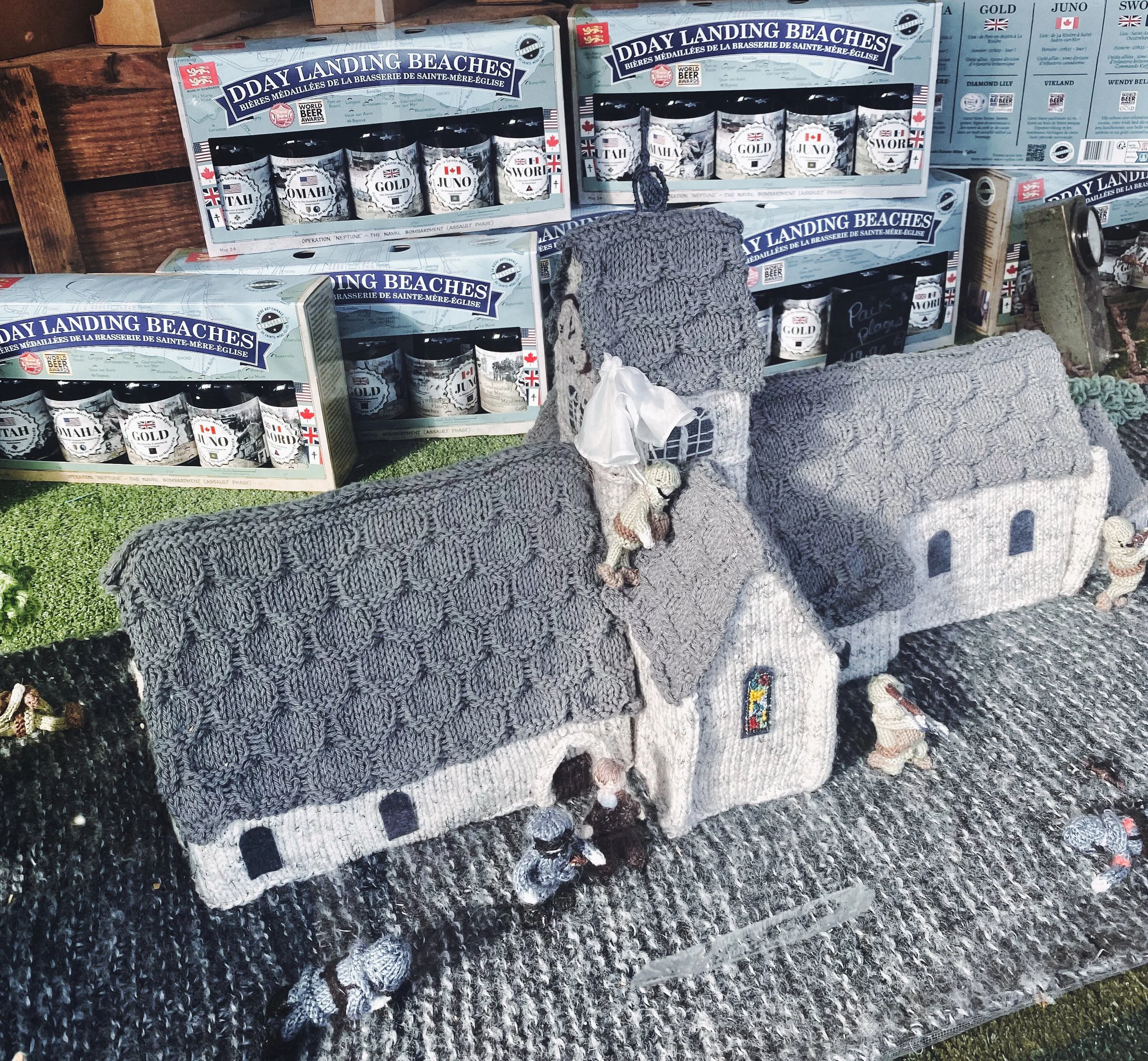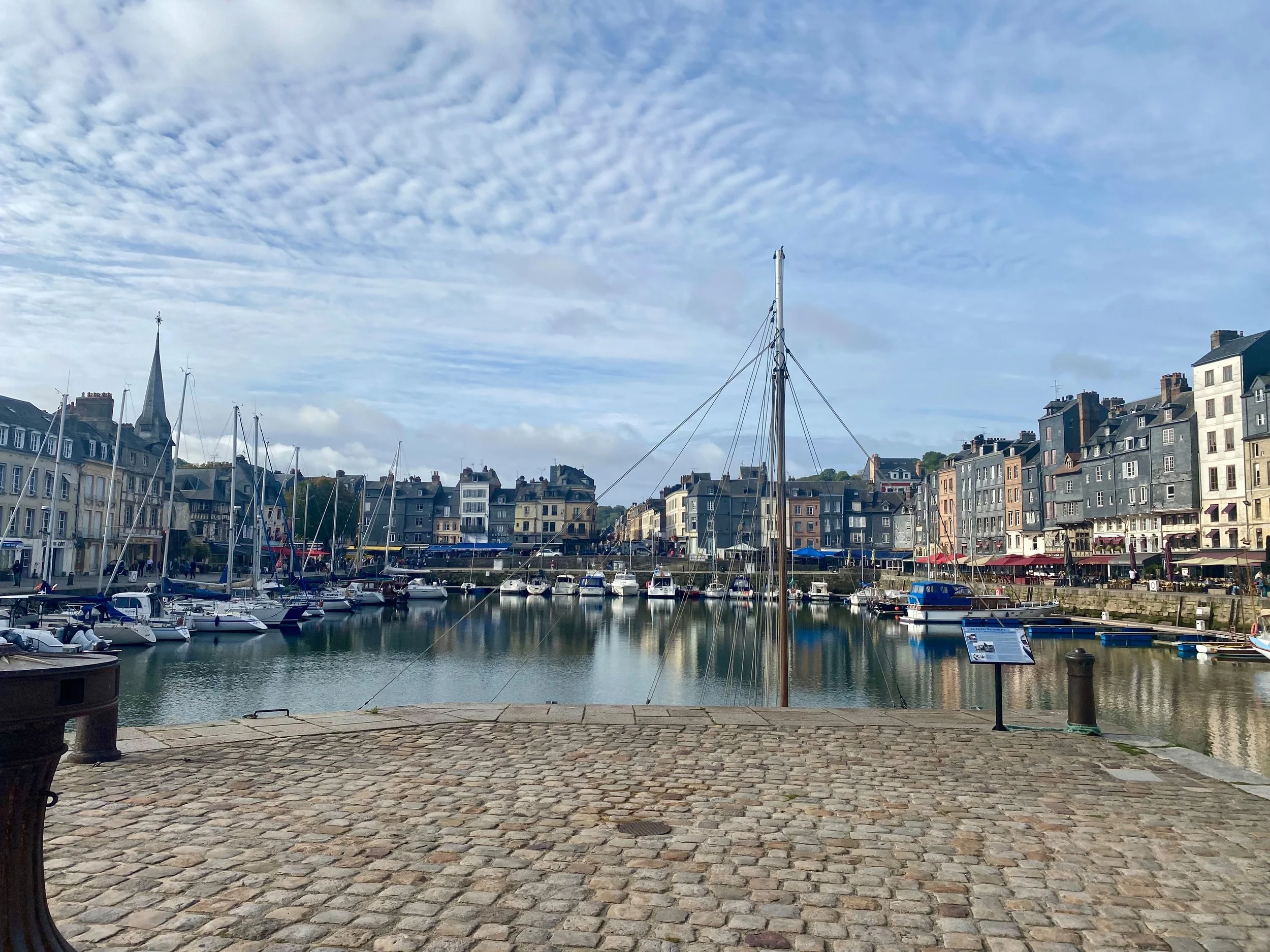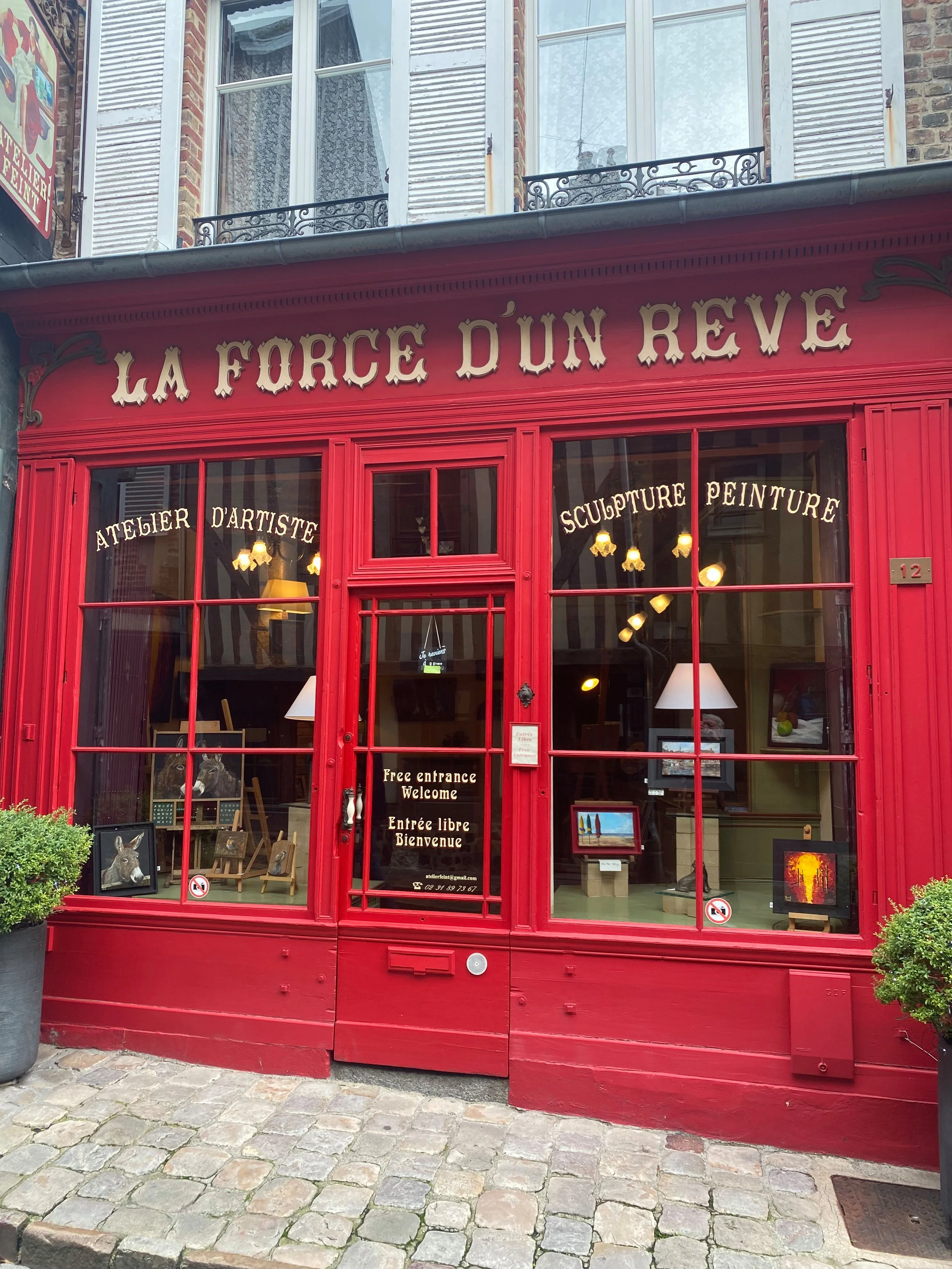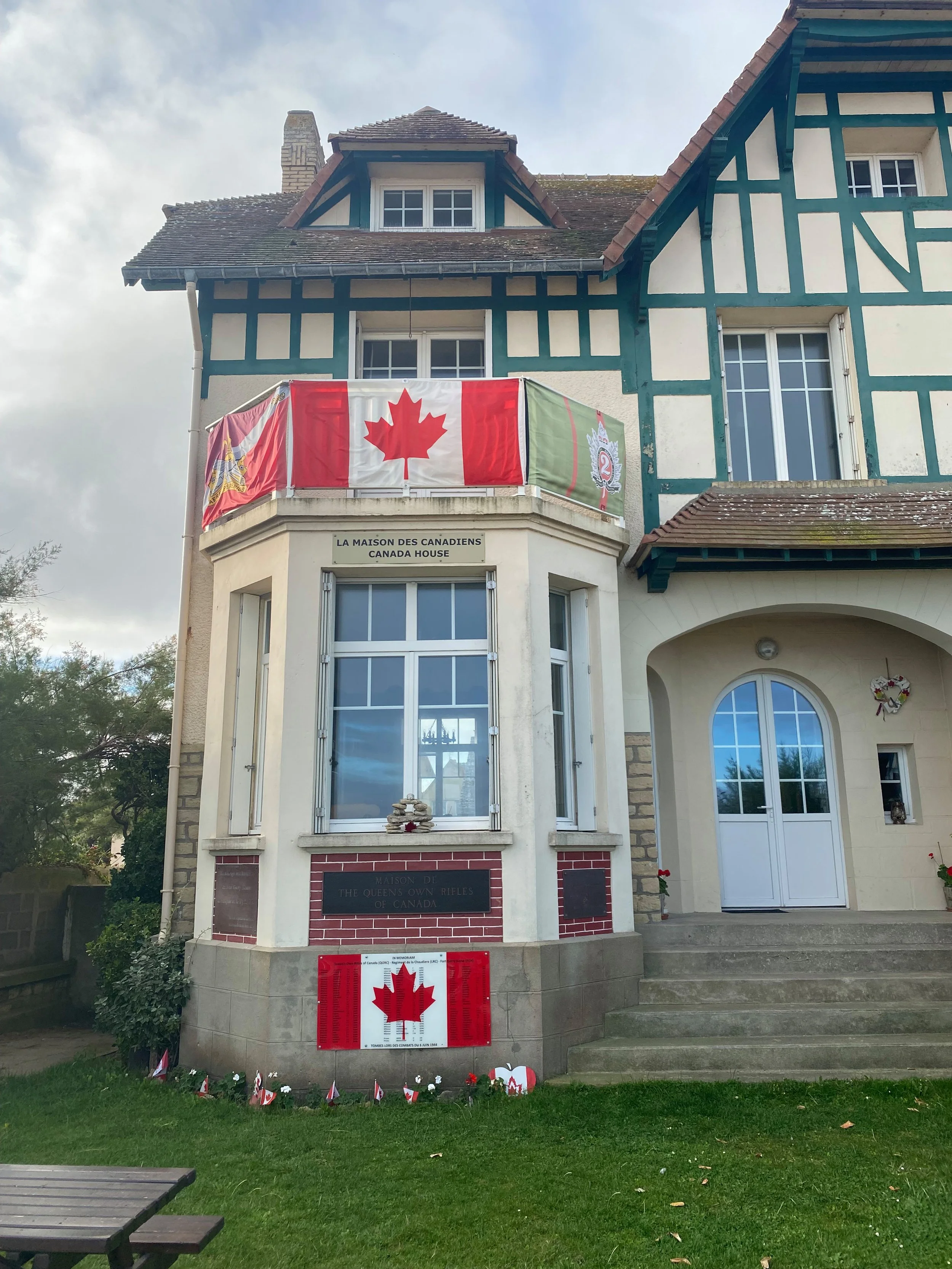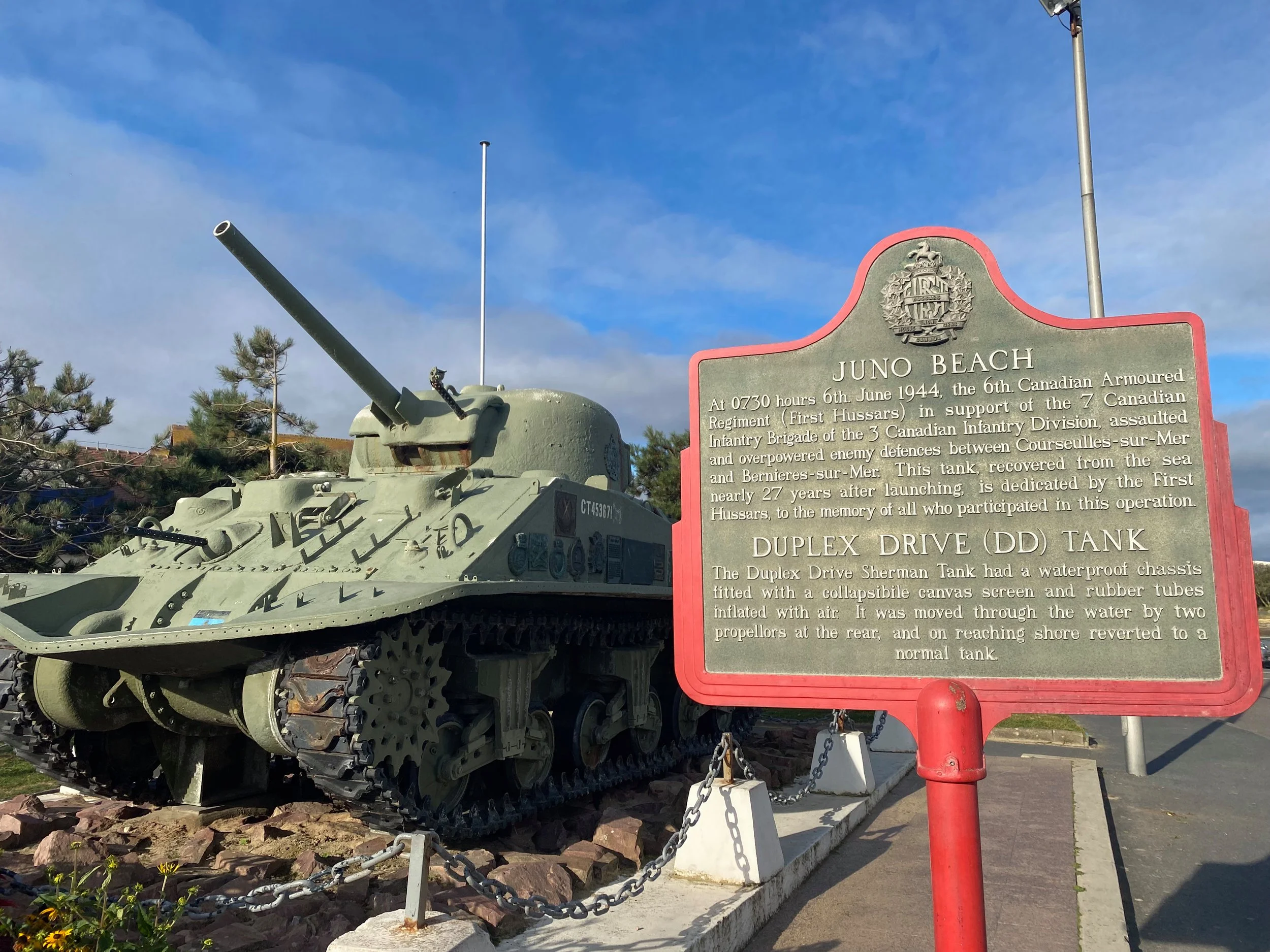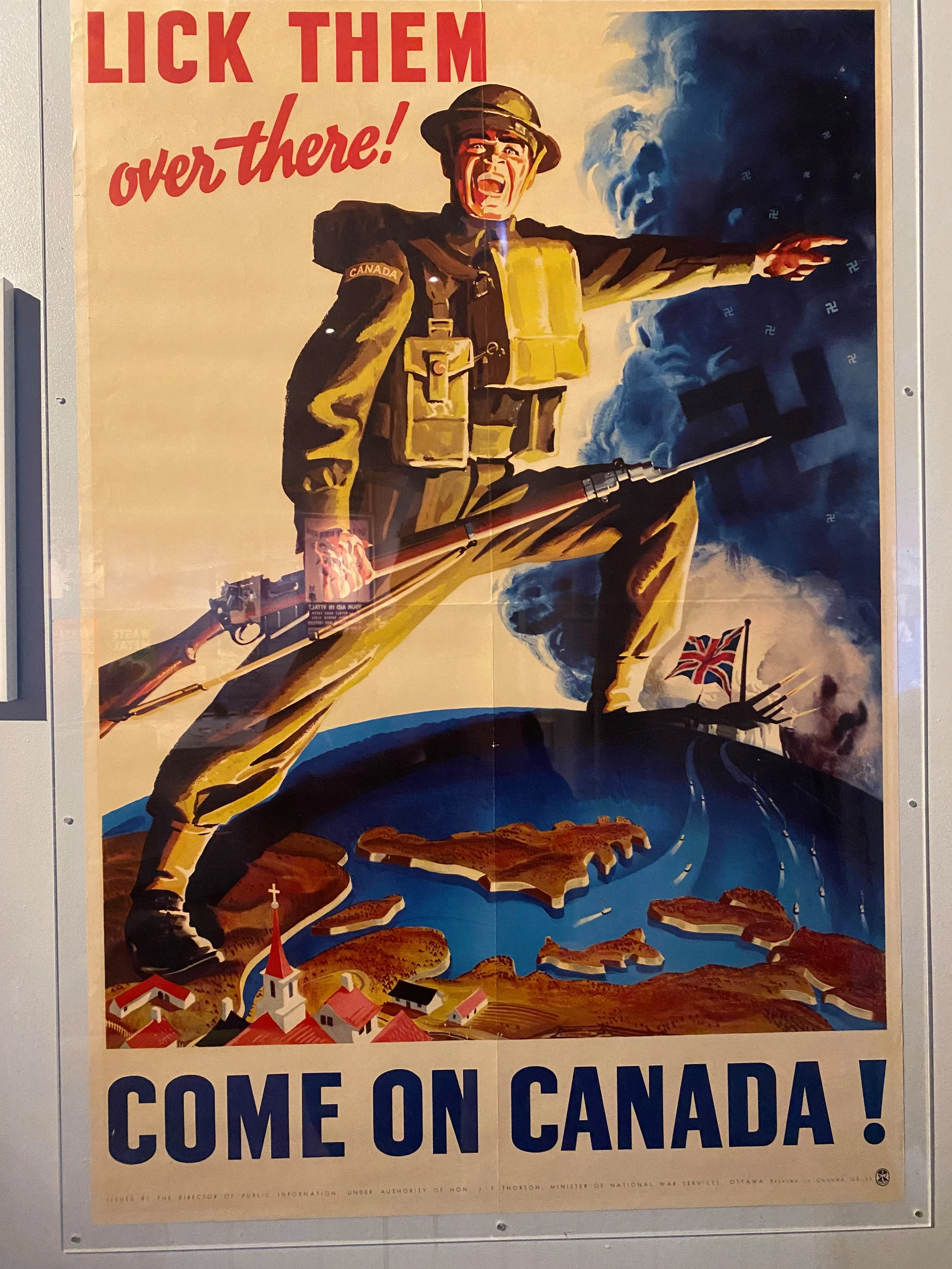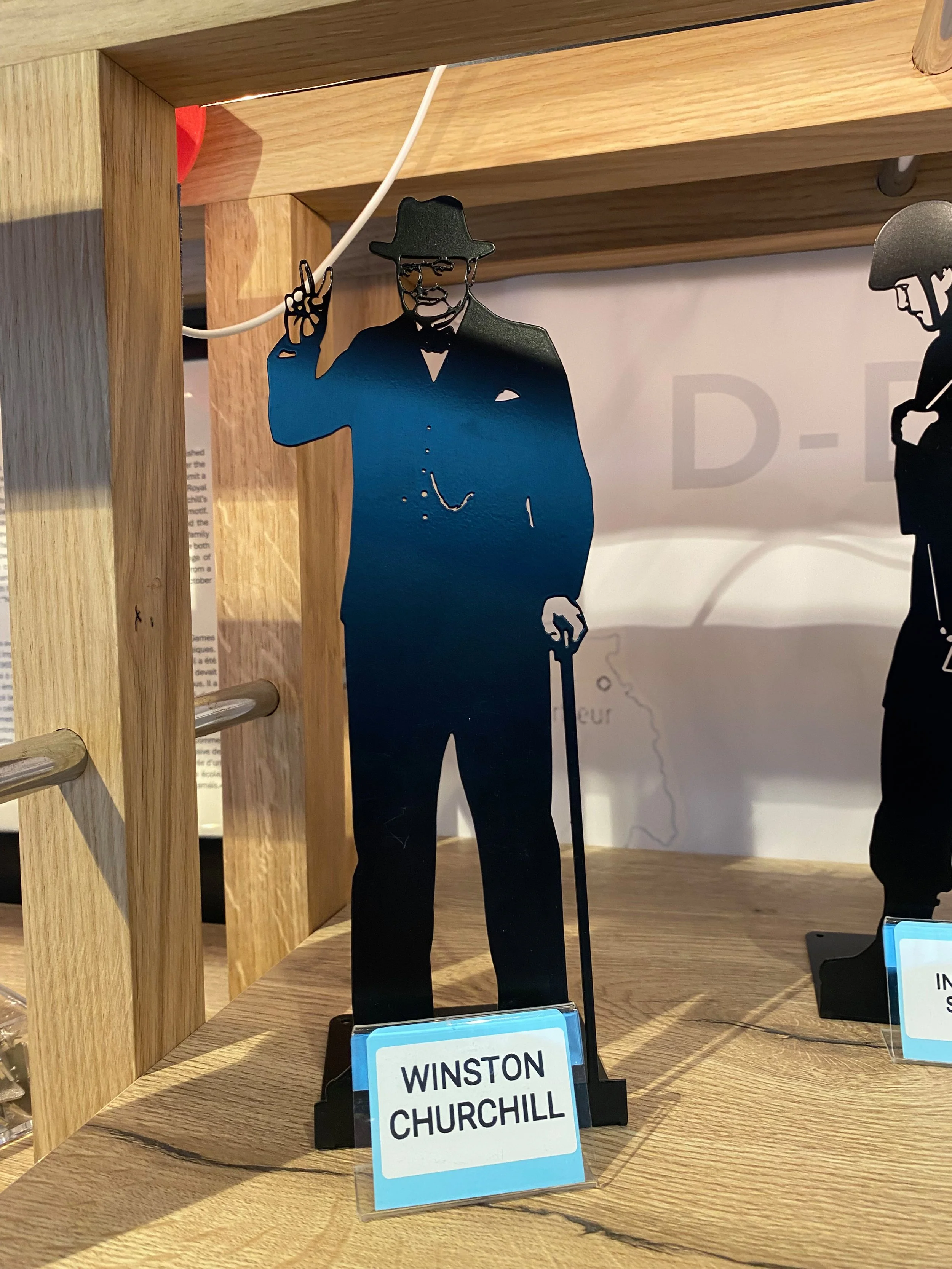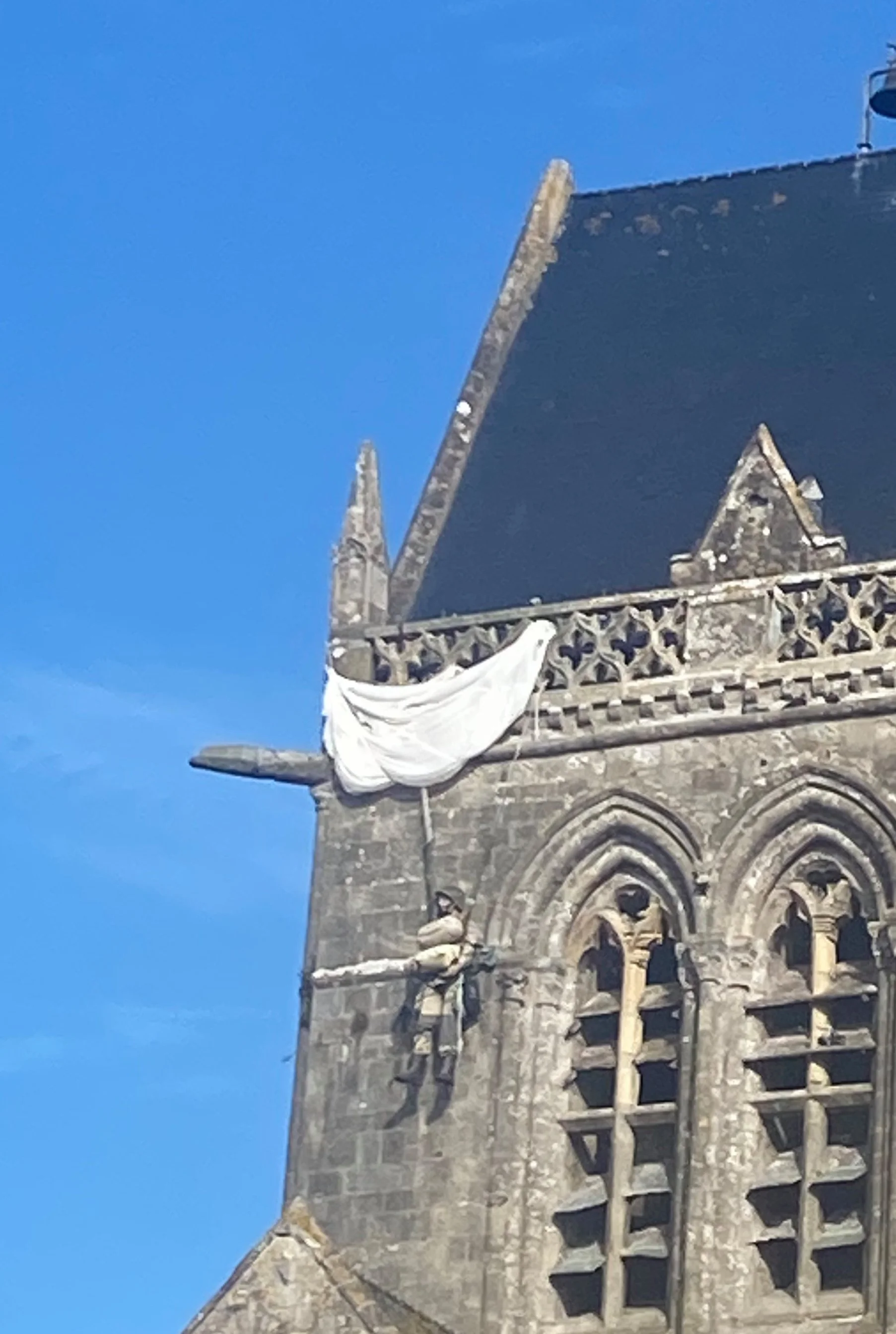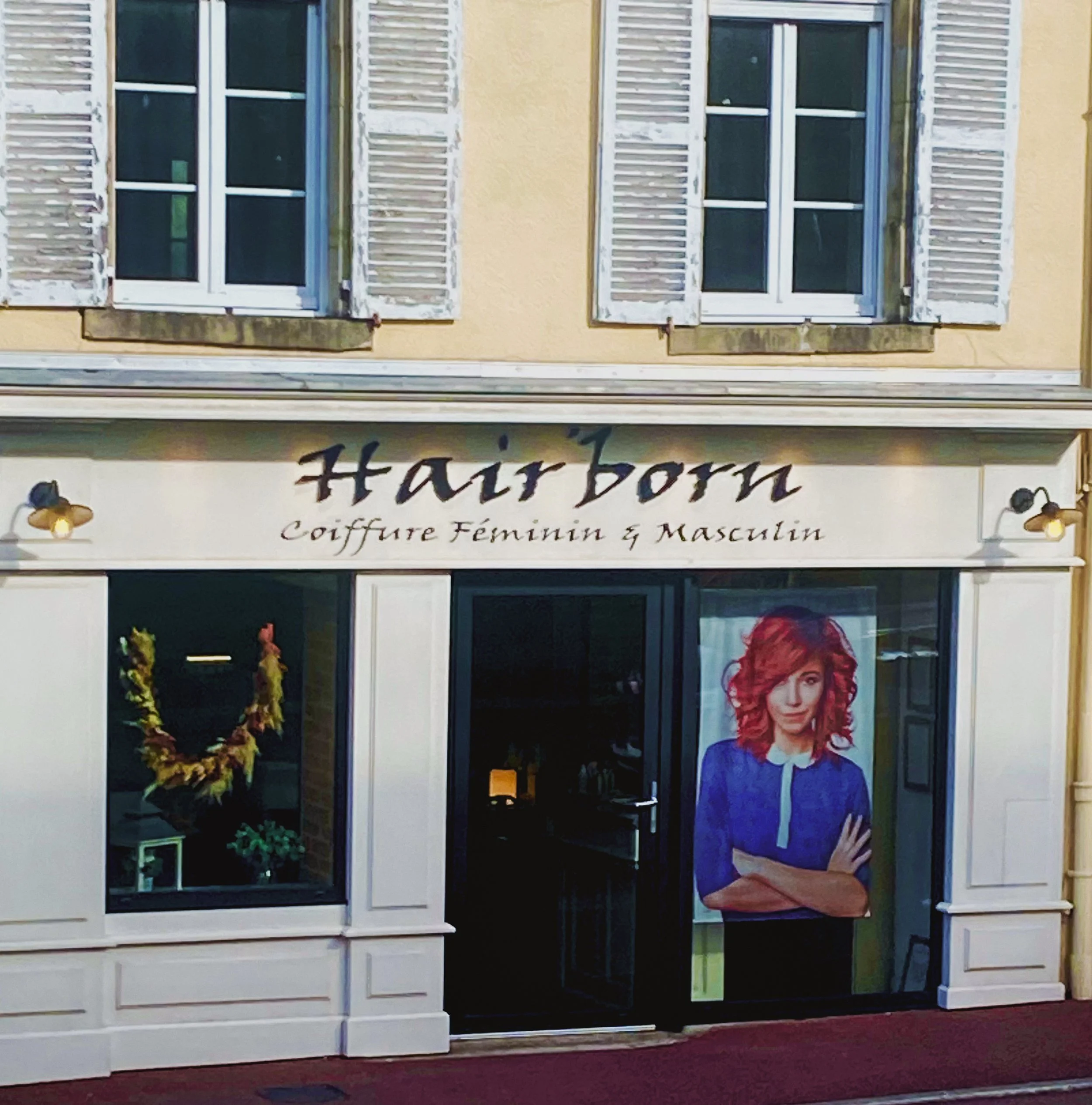It’s the economy, stupid
WHEN I WAS 11, my Dad took me to see The Longest Day at the Odeon in Middlesbrough, North Yorkshire. This was unusual because going to see a film about the D-day landings was quite a bloke thing to do, and we didn’t usually do bloke things together. For a start, Dad worked shifts and sometimes he had two jobs, so he wasn’t always available. And then we lived in a busy household with four women - my mother and three sisters - and, one way or another, they absorbed a lot of his attention.
But on this day in 1962, we took a trolley bus to the old Art Deco-style cinema in the war-blasted North Yorkshire town, and watched the actor Red Buttons hanging from a church spire by his parachute, playing dead while Americans and Germans had a shoot out in the square below.
Last month, an improbable 63 years later, I stood in that same square looking up at a church spire from which dangled what looked like a scarecrow with a parachute - a tribute to the real American paratrooper, John Steele, who had the misfortune to get hooked on the spire during his descent into Sainte-Mère-Église on June 6, 1944. I wondered if Steele had rolled his eyes as much as Red Buttons did in the film (Steele survived, by the way).
My old friend Andrew had driven us from Kent to Bernières-sur-Mer, Normandy, in one long day. It hadn’t been our intention to become D-day tourists (I was really more interested in fine dining and Calvados). But the tiny house we had rented was just a short walk from Juno beach, where the Canadians had landed - and the history of the D-day landings is simply unavoidable on that coast.
After the long drive, we sipped beer and wine in a tiny café that was also a shop and newsagent’s while waiting for our charming host to let us in. Later, when we went off in search of supper, we stumbled across La Maison des Canadiens - a classic Normandy villa facing Juno beach, which may or may not have been the first house in France to have been liberated by the allies. It is now a museum and exhibition centre, and the story of the Canadian landing is detailed on boards in a little square alongside it.
That same night, we ended up in Courseulles sur Mer, a slightly larger town, a little further up the coast and ate at Aux Plaisirs du Palais, where we had some of the best coffee either of us had ever tasted and our first sip of Calvados.
In the centre of town, close to the sea there was a Sherman Tank in what looked like a rockery with flowers, and another set of boards retelling the story of the Canadian part in the D-day landings. A few days later, we discovered the vast Juno Beach Centre in Courseulles - bigger, I think, than the UK’s National Army Museum in Chelsea, London - and gradually it began to dawn on me that we had fallen into a sort of Longest Day Experience. I have never seen so many museums and memorials, large and small, in one place.
With two days’ driving, and only three days actually in Normandy, we managed to get to Honfleur on the Seine estuary, which was beautiful in the early autumn sunlight, and Mont St Michel, which was simply remarkable. Clambering up to the abbey from sea level was like doing half an hour on a Stairmaster, and the building itself is a breathtaking tribute to medieval and Romanesque architects and builders.
Andrew turned out to be a fan of The Longest Day, and so we stopped at Pegasus Bridge in Ouistreham on the way back from Honfleur, and on a different day we sat in an open air restaurant at Arramanches with a great view of the remains of the Mulberry Harbour the allies had floated across the North Sea to provide deep water landing for men, machines and supplies.
The new British Normandy Memorial near Ver-sur-Mer - opened last year by King Charles III - was impressive and moving, although the tinplate silhouette of Sir Winston Churchill on sale in the shop of the adjoining Winston Churchill Centre (£25) seemed, to coin a phrase, a bridge too far.
It was Sainte-Mère-Église that left me really scratching my head though. The scarecrow hanging from the spire was odd. But the yarn-bombed scene of a woolly church (with a woolly parachutist hanging from the spire) and little grey wool Nazis shooting at little woolly American paratroopers in the window of a local shop struck me as deeply strange. Behind the yarn-bombed scene from The Longest Day, there were presentation boxes of five bottled jams named after the D-day landing beaches: Utah, Omaha, Gold, Juno and Sword.
Nearby, the local hairdresser was called Hairborne: a punning tribute to the paratroopers of the American Airborne division who had descended on Sainte-Mère-Église 81 years previously.
It all seemed, I suggested to Andrew, just a little kitsch, by which I meant in questionable taste perhaps. Andrew shrugged his shoulders. If D-day tourism is a thing, he said, then giving tourists what they want makes sense.
I wasn’t so sure, and it took me a month or two to process what I’d seen. While I was doing that, I read Cornelius Ryan’s incredibly well-researched and quite horrific book on which the film was based, and for the first time in more than 60 years, I watched The Longest Day again. Ryan wrote the book in 1959 and the much-less-horrific film was made - with Ryan working on the screenplay - three years later. It features a ridiculous parade of stars, too many to mention. It’s also long at getting on for three hours - and I loved it.
It brought me back with a jolt to that yarn-bombed scene in Sainte-Mère-Église. And I thought about the film: Red Buttons rolling his eyes, Robert Mitchum chewing on a dead cigar, Richard Burton playing himself (as he always did) and John Wayne leading his troops into battle with a broken ankle. It was nothing if not theatrical.
And then I thought of those women - I assume they were women - who created the yarn-bombed scene from The Longest Day over many hours. Did they sip wine or coffee? Did they gossip and talk of the old days? Did it take forever?
Perhaps, I was being too harsh in my interpretation. Perhaps the yarn bombing was reverential, the hairdressing pun a heartfelt tribute. Perhaps I should just dispense with all efforts to understand motivation, and mind my own business.
But then I did the research and discovered that, of course, ‘it’s the economy, stupid’. Andrew was right, tourism accounts for 5.9 per cent of Normandy’s GDP and supports around 39,000 jobs. And total tourist spending for the D-day landing and battle of Normandy sites was around €700 million in 2022 - that’s probably worth doing a bit of crocheting for.
* The week we got back from Normandy would have been my father’s 100th birthday, had he lived beyond 62. I think he would have enjoyed the trip, as much as we both enjoyed the film. Here’s to you, Dad!

